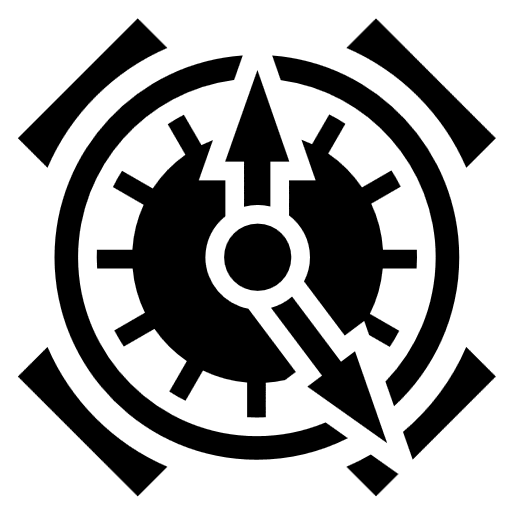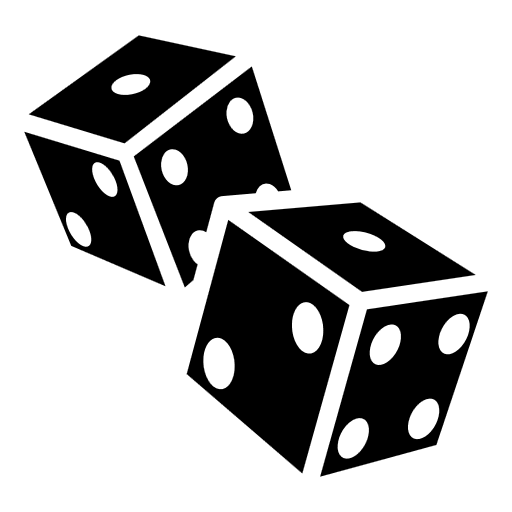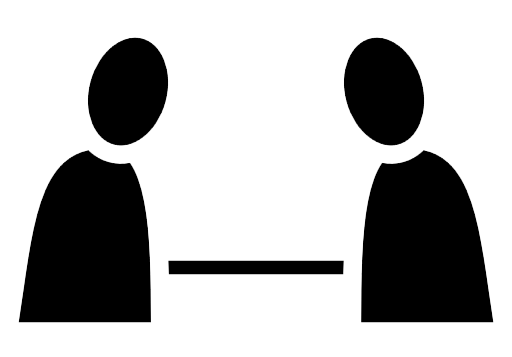The key element in organizing your open table is figuring out how you want to schedule sessions. For an open table, events tend to break down in two categories.
OPEN CALLS: For an open call, the GM simply announces the date and time of the game. Players then RSVP.
 An easy variant of the open call is the regular session: Maybe you play every Tuesday night, for example.
An easy variant of the open call is the regular session: Maybe you play every Tuesday night, for example.
SPONSORED SESSIONS: Alternatively, specific players (or groups of players) can “sponsor” a session by approaching the GM and requesting it. I generally tell players that they should offer me a range of dates and then I can figure out which one works for me. It’s up to them whether they want the sponsored session to also include an open call to fill any empty seats or if it’s an “exclusive” event just for them.
The reasons for sponsored sessions can arise from either the game world or the metagame. For example, I’ve run sponsored sessions in order to “explore the Temple of Elemental Evil”, “retrieve Varla’s corpse”, or “to go back for the rest of that treasure before anybody else snatches it”. I’ve also run sponsored sessions because Steve was in town, for a bachelor party, because we all happened to be drunk at the time, and because somebody was bored and wanted something to do on a Tuesday night.
COMMUNICATION & COMMUNITY
Mass e-mails are perhaps the most straightforward method of making open calls and otherwise communicating with your pool of players. But they can also be something of a blunt instrument.
My group experimented with a wiki for awhile, but the participation rate was low and it was ill-suited for event announcements. (I’ll probably experiment with supplemental wiki support for open tables again in the future, but for the moment I’ve lain them aside.)
What I have found effective is a Facebook group. (Why Facebook instead of G+? Primarily because too many people from my player pool aren’t on G+. If yours are, then G+ groups have a lot of advantages.) Everybody can sign up. Everyone can talk to each other. Creating a new event is as easy as pressing a button, and it’s easy to track people’s RSVPs. You can also use the group to host basic information and orientation material.
TABLE CAPS & WAITING LISTS
My first forays with an open table featured a simple, “We’ll play with whoever shows up!” ethos. As the popularity of the open table grew, however, this quickly became non-viable: I had one session in which I GMed for ten players running something like twenty-two total PCs and hirelings.
Then I imposed table caps.
The system is pretty simple: I cap the number of players at a certain number. These slots are filled on a first-come, first-serve basis. Once the cap is hit, that’s it for that session.
To prevent highly active players from monopolizing the slots at every session, I also instituted the concept of the Waiting List: If you signed up for a session, but couldn’t play because of the session cap, then you were given preferential placement for the next session.
The Waiting List also helps cope with the problem of last minute cancellations (because you can call up the next person on the waiting list).
The size of your table cap is almost entirely up to you (and possibly the comfortable limits of your playing space). For example, I know that I can run 5 players comfortably, 6 players are usually manageable, and with 7+ players the quality of the session will usually begin to decline. So I set my table cap at 5 and occasionally have a sixth player join (usually the significant other of the fifth player).
CAMPAIGN TIME MANAGEMENT
“YOU CANNOT HAVE A MEANINGFUL CAMPAIGN IF STRICT TIME RECORDS ARE NOT KEPT.”
– Gary Gygax, Dungeon Master’s Guide
You’re going to have a lot of different characters doing a lot of different things in the setting, and a couple primary questions will arise:
- What happens if I go to Dungeon X while Character A (who isn’t playing tonight) is still there?
- If Character A and Character B go on an adventure together, and then Character A goes on five more adventures, and then Player A and Player B sit down for a session together… what do we do? Character A is weeks ahead of Character B!
Easiest solution: “I don’t care.” Just handwave these things away and don’t worry about it.
But there are reasons why Gygax said what he said. It was an attitude shared by a lot of the early pioneers (including Dave Arneson, M.A.R. Barker, and Bob Bledsaw among others).  And you’ll quickly discover for yourself that without a more concrete handling of the passage of time, there’s a lot of potential activities and consequences and fun things that won’t be possible.
And you’ll quickly discover for yourself that without a more concrete handling of the passage of time, there’s a lot of potential activities and consequences and fun things that won’t be possible.
Here’s my basic suggestion: Have campaign time match time in the real world. For each day that passes in the real world, a day also passes in the campaign world. If a player can’t play for a couple of months, that means that their character was just idly passing the time. (Alternatively, you could start developing mechanics for handling the passage of time: What were their upkeep costs? How are their investments doing? Did they succeed at any arcane research? Did they join a Thieves’ Guild? Or, if you’ve got the time and your players are interested, you could engage with players through weekly e-mails to see what their characters have been up to.)
Within the appearance of this simplicity, however, you’ll discover that there are some potential problems. I’ll discuss my own experience with keeping time in my original open table campaign as an example of how you might deal with some of those problems.
IN THE DUNGEON: The early days of the campaign featured a single megadungeon. The solution of using the real passage of time was largely flawless here: The amount of time that passed in any given session was usually shorter than the amount of time that passed between sessions in the real world (and the few exceptions could be easily fudged).
IN THE WILDERNESS: When the campaign expanded into a full-blown hexcrawl, however, we began running into our first serious time management problems. Crossing unexplored wilderness could chew up days or weeks of time in the game world while using up mere minutes of table time.
The first solution I attempted was to have the clock always move forwards: If Expedition A ended 18 days in the future, then when Expedition B started the next day in the real world we’d still be 17 days in the future. The problem with this approach was that it radically pushed campaign time into the future: If you missed just a handful of sessions (which is, of course, common in an open table), you could find that months had passed for your character.
LOCKDOWN: What I ended up doing instead was to adhere to real time for the start of each expedition. Expedition A was played on March 17th in the real world and Expedition B was played on March 18th, then Expedition B started one day later in the campaign world, too.
This meant, of course, that Expedition A was still happening. This meant that any characters in Expedition A were locked down – they couldn’t be played in Expedition B. I would also lock down any locations that had been visited by Expedition A: You couldn’t break continuity by going to the same dungeon as Expedition A because we already knew that hadn’t happened (since we had seen those events play out with Expedition A).
CHARACTER STABLES: With that being said, I didn’t want players to be prevented from playing just because their character was currently locked down. This led to the practice of each player having multiple characters in the campaign world.
Having this stable of characters proved useful in other ways: For example, players could choose the character which was closest in level to the other players on a particular expedition. (Or, alternatively, choose to play a high-level patron whose expertise the entire group could benefit from.)
TRACKING TIME: In order to track all of this information, I simply kept a list of all the player characters currently active in the campaign on my campaign status sheet. If they were in lockdown, I listed that. I also listed any outstanding expeditions (i.e., expeditions from previous sessions whose end date had not yet been passed) and the locations locked down in association with them. In practice, this requires virtually no effort.
END OF SESSION STATUS
The other thing to consider in an open table is the end of session status for player characters. In general, for the open table to work at the end of a session the player characters need to return to their home base (or whatever position they need to be in to participate in open group formation at the beginning of the next session).
To facilitate this for a traditional D&D campaign, I created tools like the Escaping the Dungeon! table.
SEQUEL SESSIONS: I did, however, also offer an alternative: If the evening was coming to a close and the group was in the middle of something important to them, then we could continue that session if (and only if!) everyone at the table could immediately agree on a time within the next 10 days to continue the scenario. (If they couldn’t, tough luck: They’ve got to get out and they’ve got to get home.)
The reason for the strict limitation on this is that, in the interim, all of these characters (and the location they’re in) would be locked down. This creates all sorts of complications for the open table. There was one time when I set up a sequel session and several of the players had to cancel on it. Trying to reschedule proved challenging and we ended up bouncing it around for two or three months before I finally wrote it off and released the lockdowns. In the interim, however, all of the momentum in that section of the campaign had been lost: I would have been far better off immediately writing off the sequel session and allowing subsequent expeditions to be scheduled to pursue the loose ends which had been left.
CHARACTER CREATION GUIDELINES
A final thing to consider, if you’re planning on using some form of away-from-the-table character generation to resolve the lack of quick character generation in your system of choice, are the character creation guidelines you want to use.
As a tip: If your system of choice features organized play, looking at the character creation guidelines for that can often be useful. Their needs will be similar to your own, although you can often relax many of their strictures.
















